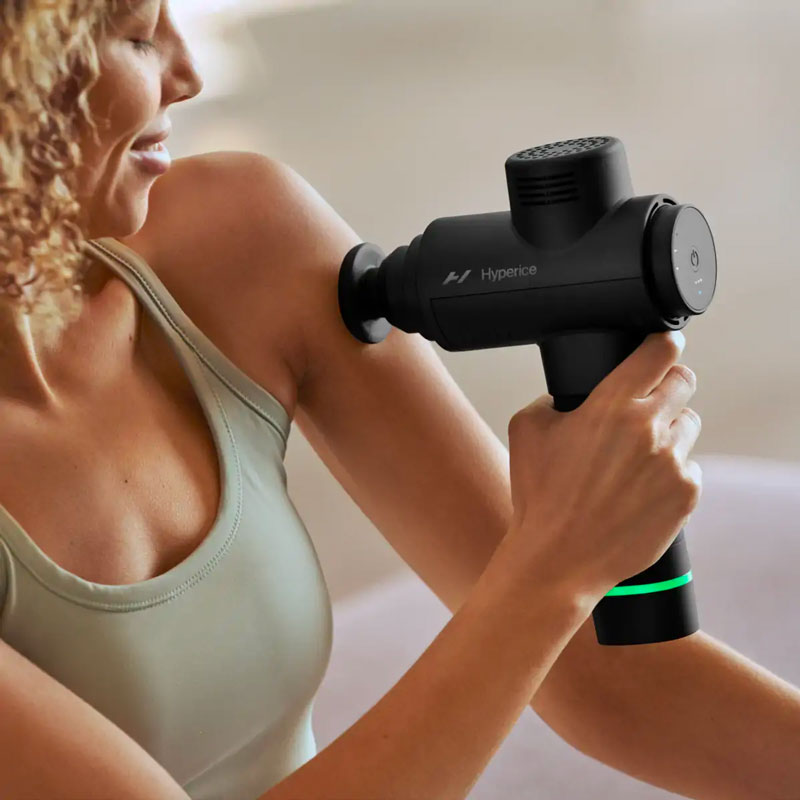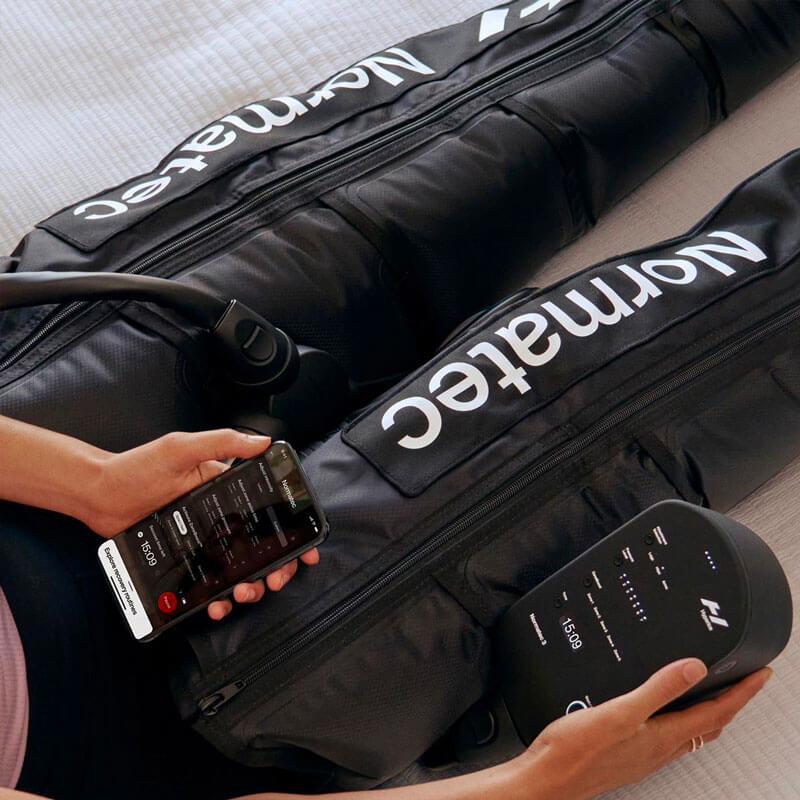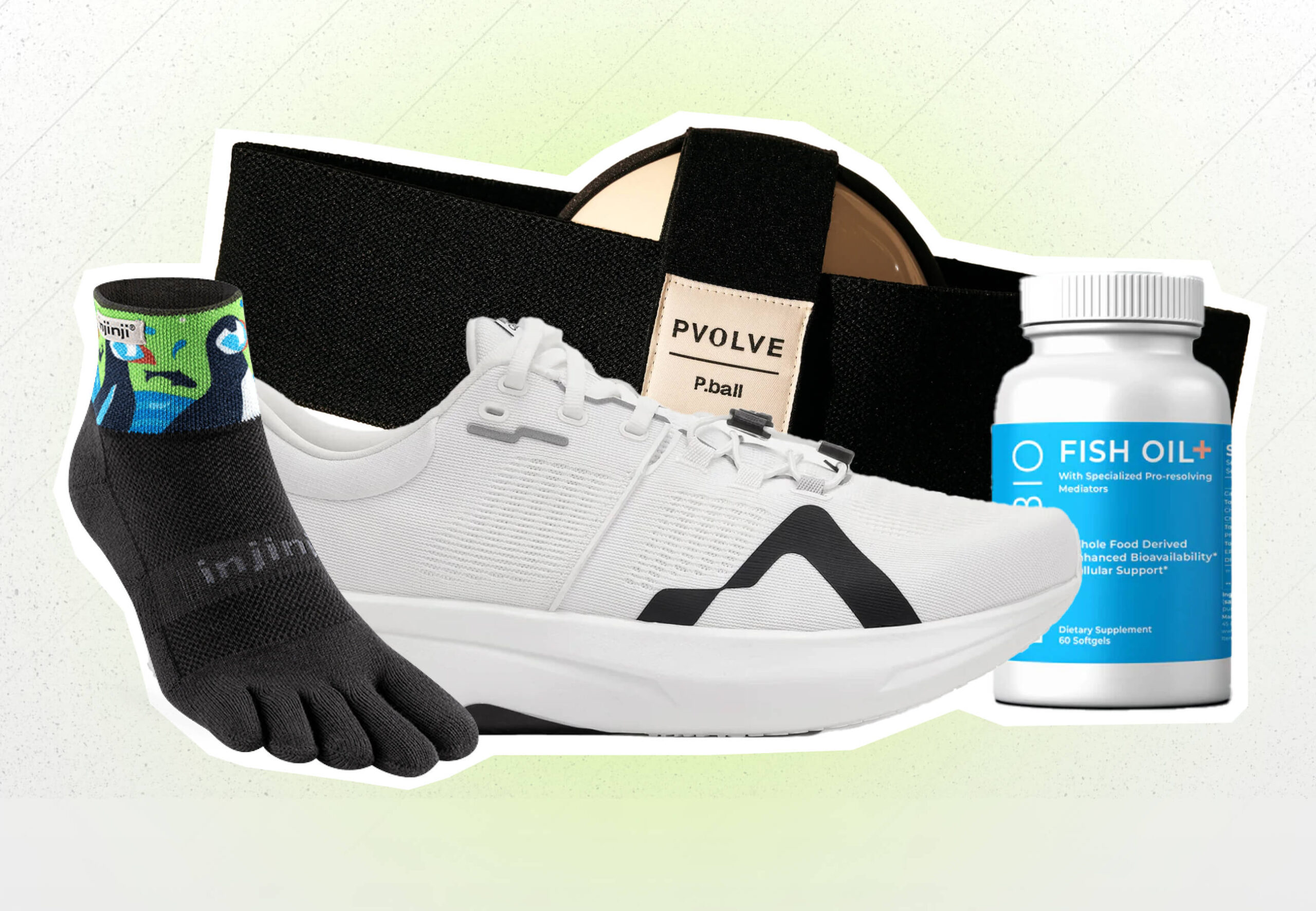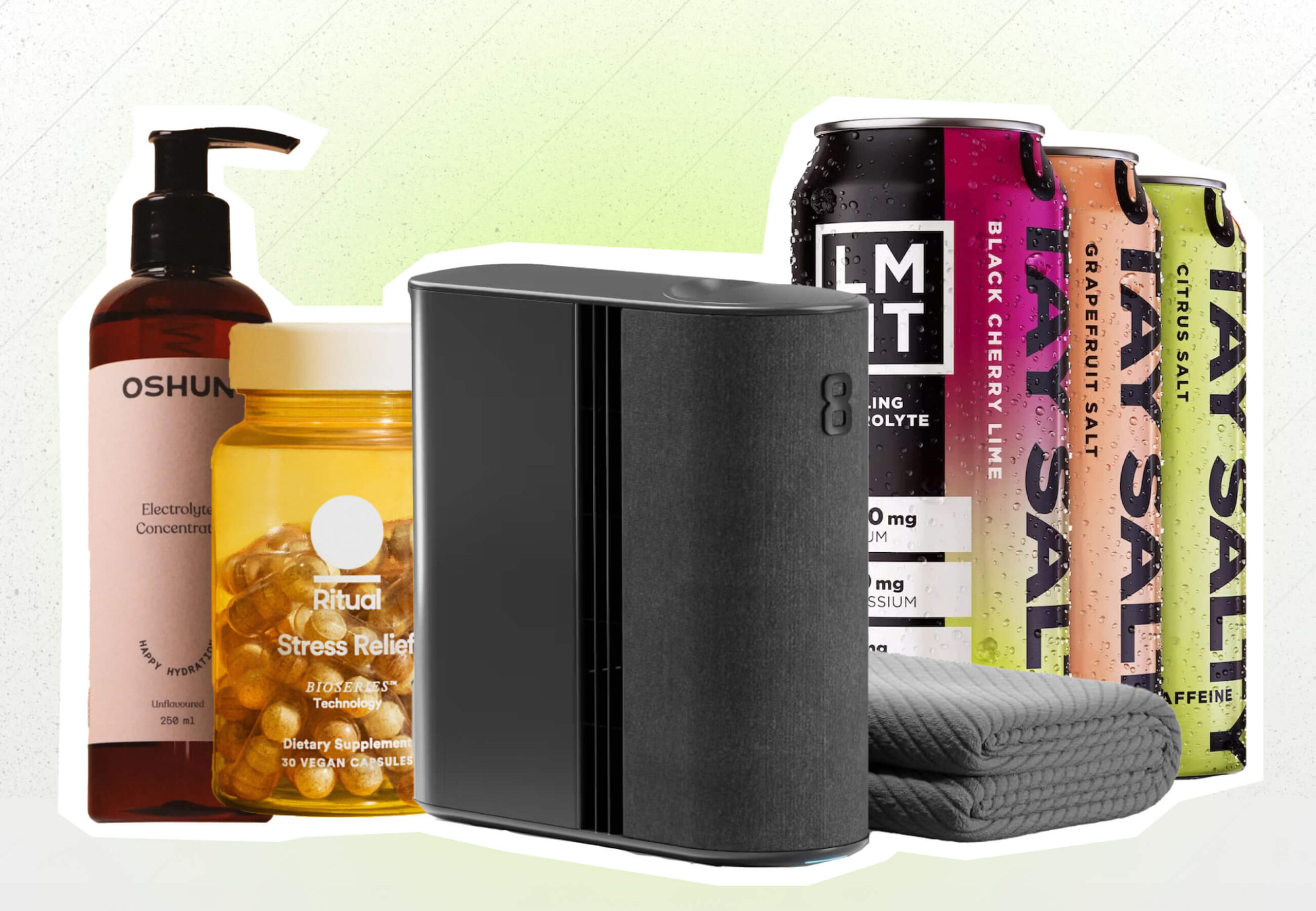Post-run recovery: 6 Expert tips (plus, product picks)

For most runners, the pursuit of progress often overshadows the significance of recovery.
However, 27 to 70-percent of runners will experience at least one preventable sprain or strain each year. Moreover, you could even be leaving gains on the table in your running performance without adequate muscle recovery.
By prioritizing recovery as much as your training, you’ll improve speed and endurance and enhance your overall health and well-being. Here, you’ll learn expert post-run recovery tips to get the most out of every run.
Understanding the importance of post-run recovery
When you’re in the thick of a run training program, taking it easy is typically the last thing on your mind. But studies consistently show that running-related overuse musculoskeletal injuries, like runner’s knee, IT band syndrome, shin splints, or plantar fasciitis, are almost entirely preventable with progressive training and recovery.
When you push running speed or volume, your muscles take on a lot of wear and tear. Without recovery, you can sacrifice the crucial muscle adaptations from post-run muscle protein synthesis in the short term. Continue your training this way and over time, you may develop overtraining syndrome, characterized by prolonged fatigue and a steep performance decrement.
Your workout stimulates the body into a stress response, challenging and building cardiovascular and muscular performance, explains PJ Nestler, a certified strength and conditioning coach and Vice President of Performance FitLab. “Depending on the intensity of your run, it can take up to 3 to 5 hours for your nervous system to recover – making a post-run strategy essential to expedite this process.”
No matter your running experience or pace, recovery starts the minute you finish your run. You can ease into your post-run recovery with these simple steps.
6 Post-run recovery tips
1. Cooldown
While a warm-up revs up your cardiovascular system and muscles to prepare you for your run, your cooldown sets the stage for the rest of your day and the quality of your recovery.
During your workout, outside of your brain and heart, most of your blood flow goes to your muscles to support your workout and your skin to regulate your temperature. A proper cooldown restores blood flow and pressure so blood gets shunted back to your major organs.
Bring your heart rate and breathing rate down by first reducing the intensity of your run. For instance, going into a jog after repeated sprints or walking after a moderate run. Spend five to ten minutes gradually reducing your intensity to seamlessly go into a flexibility routine while your muscles are still warm, but your heart isn’t racing anymore.
2. Rehydration
Adequate hydration before, during, and after a run is crucial for faster recovery. Some key ways hydration helps you recover include:
- Muscle repair: Proper hydration delays fatigue during exercise and accelerates muscle protein synthesis, helping to repair muscle fibers damaged during your run.
- Central nervous system recovery: Hydration will boost your parasympathetic nervous system activation into rest and digest state and improve focus and cognition.
- Tissue repair: If you’re dealing with a pesky overuse injury, staying hydrated reduces inflammation, promotes blood flow to injured areas, and expedites overall recovery alongside standard rehabilitation programs.
- Reduced joint pain: Synovial fluid is 80-percent water. By maintaining the cushioning and lubrication in synovial joints, you’re protecting yourself against chronic pain.
The U.S. National Academies of Sciences, Engineering, and Medicine recommends consuming 3.7 liters (15.5 cups) for men and 2.7 liters (11.5 cups) for women of fluids daily, which includes the foods you eat. However, your running routine and conditions outside may require more fluids and added electrolytes or carbohydrates.
You may be fine with water and your normal diet following a 30-minute moderate run in cool weather. But if you’re running for two hours in the heat, you’ll want to include a sports drink, salty carbohydrate snack (like pretzels), or other rehydrating supplements to support your workout and recovery.
3. Stretching
It’s common to feel tight after a long run, but staying tight can compromise your everyday mobility and performance during other workouts. Your muscles have an optimal length-tension relationship: too much contraction and the muscle fibers overlap too much, reducing your contraction strength in other activities. Adding flexibility training into your routine can bring them back to resting length.
The following stretches target muscles, like the hamstrings, quads, glutes, hip flexors, lower back, and calves, used in running:
- Deep lunge: keeping the front knee in line with the heel, extending the back leg long with heels off the floor, and hands under your shoulders on either side of the front knee. Pull hips under, lengthening the back to stretch the hip.
- Single leg toe-touch: keeping the back leg bent, extend one leg forward with the foot flexed. Reach down with a flat back to touch your toes (or rest hands on thighs) to stretch the hamstring.
- Standing quad stretch: kick one heel back into your hand and extend the same hip forward so knees and hips are in line. Hold onto a wall or chair for balance.
- Figure 4 stretch: cross one heel over the other knee to form a figure-4 shape. Sit the standing hip back like a chair behind you, stretching the glute. Hold onto a wall or chair for balance.
- Standing calf and Achilles stretch: (30 seconds with the back leg straight, 30 seconds with the back leg bent, and the heel staying on the floor)
While dynamic stretches are useful in your warm-up, you can take your time in your post-run static stretching. Hold stretches for 30 seconds to a minute, breathing deeply and progressively increasing the range of motion as you go.
4. Breathing
Follow up your run with a recovery breathing protocol to help your nervous system reset. “Deep breathing triggers physiological and psychological changes in the body,” explains Nestler. “This activates the parasympathetic nervous system and moves you quickly into the rest and digest state where recovery occurs.”
Try this breathing protocol, created by XPT, to bring you back to a resting state:
- Step 1: Find a comfortable place to lie down or sit quietly.
- Step 2: After your breathing has returned to normal, slowly inhale through the nose, focusing on filling the air deep into your belly, ribs, and lower back while relaxing your neck, face, and shoulders. Your inhale should feel natural and last between 3-5 seconds.
- Step 3: Pause briefly at the top of the inhale and actively think about relaxing any tense or aching muscles as you transition into the exhale.
- Step 4: Exhale slowly from the mouth, with your lips very slightly open, making a faint hissing noise, as if the air is releasing from a small hole in a bike tire. Your exhalation should last between 5 and 10 seconds.
- Step 5: Briefly pause at the bottom of the exhale, then repeat from Step 2.
You can set a timer so you know when to come out of the protocol. Start with three minutes of this routine and work up to five to six minutes. “Don’t stress too much about the exact durations of the inhales and exhales; instead, focus on deep, slow, and relaxed breathing,” suggests Nestler.
5. Nutrition
Optimizing your post-run recovery starts with strategic nutrition choices. Aim to refuel with a snack or meal rich in carbohydrates and protein within 30 minutes post-run, and continue fueling throughout the day. Consider some of the following post-run snacks:
- Chocolate milk
- Yogurt with fruit
- Tuna with crackers
- Fruit smoothie with protein powder
- Eggs and egg whites on toast
- Grilled chicken with sweet potato
During high-intensity runs, carbohydrates become your primary fuel source, rapidly depleting glycogen stores. Consuming carbs both before and after your run facilitates quicker recovery afterward.
Adequate post-run protein intake is crucial for muscle recovery. The repetitive muscle contractions of running cause microtears in muscle fibers, prompting repair and rebuilding processes. Protein in your diet directly influences muscle protein synthesis, making it pivotal in supporting your training. Research shows adding protein to your post-run snack also expedites glycogen replenishment.
Here’s a breakdown of nutrients that will replenish your energy stores effectively:
- Pre-workout carbohydrates: 1-4 g/kg consumed 1-4 hours before your run
- Carbohydrates post-workout: 1.2 g/kg/hour for 4 hours following run (particularly important if you’re working out again in the next 12 hours)
- Overall daily protein intake: 1.2 to 1.6 g/kg/day
- Protein post-workout: 20-25 g (or more based on overall protein requirement)
6. Sleep
Prioritizing sleep and rest is crucial for optimizing post-run recovery and reducing injury susceptibility, says Jim Huether, CEO of Hyperice. During sleep, your body undergoes essential repair processes, benefiting all systems, especially muscle cells.
Studies show that the growth hormone and insulin-like growth factor-1, released during sleep, stimulate muscle protein synthesis, aiding recovery. Sleep deprivation can prolong muscle repair time, affecting performance in subsequent workouts and potentially increasing your risk of injury.
Aim for seven to nine hours of sleep per night to ensure you’re well rested. Naps of 20 to 30 minutes can help with alertness, and naps lasting up to an hour can help subsequent running performance. Leave a 30-minute buffer before your run and keep your nap to midday to avoid disrupting nighttime sleep.
Recovery techniques and products for runners
Post-run recovery tools employ various techniques to alleviate muscle soreness and aid the recovery process. “From marathoners and Ironman athletes to everyday runners, we see that everyone wants to come out of their run feeling better,” says Huether. Developing a recovery routine can help you get there. Here are a few key recovery modalities that can get you back on your feet faster:
Percussion therapy
Percussive therapy is like a handheld self-massage tool, increasing blood flow to the muscle and reducing soreness. Research shows percussive therapy helps restore muscle compliance and reduce stiffness following a hard workout.
Hyperice Hypervolt
Professional all the way to everyday athletes can use Hyperice’s user-friendly and portable Hypervolt to enhance recovery and mobility.
Hyperice recently added a heated applicator head to their popular Hypervolt. The combination of heat therapy and vibration technology aims to provide deeper muscle relaxation and expedited recovery. “These tools have been tremendous for runners who have soreness or stiffness in their calves or hamstrings or quads and seek a quick recovery post-workout,” says Jim Huether.

Compression
Compression boots utilize intermittent pneumatic compression, called peristaltic pulse dynamic compression, to reduce pain and discomfort. In a study performed with Olympic Training Center athletes, researchers found a 15-minute session in the boots reduced pressure-to-pain measures (a standard measure for soreness).
Hyperice Normatec
Hyperice’s Normatec leg boots are popular with runners and elite athletes to increase blood flow and circulation, Huether explains. Just 15 to 20 minutes post-run or before bed can enhance recovery and set you up for more restorative sleep.

Foam rolling
Similar to other massage modalities, foam rolling, or myofascial release, increases blood flow to the area and compresses the muscles momentarily. Studies show these actions help to reduce soreness and muscle pain associated with your run. One study performed in mice even found favorable results in inflammatory markers in muscles, promoting muscle regeneration.
Double Roller
The Double Roller from Lululemon delivers two different foam rollers in one. You can use the exterior roller with narrow ridges to massage your arms and legs and the interior roller with wide ridges to target the muscles running the length of your back.
With both your foam roller and percussive therapy device, spend 30 to 60 seconds targeting each muscle group with slow and deliberate movements. When you find a tight spot, hold the roller or percussive device in that position for 30 seconds or until your muscle relaxes, and avoid going over bones, joints, or injured areas.

Make recovery a routine
Your everyday routines make all the difference in how impactful your training is on your performance, explains Huether. “If you want to advance the way you feel and advance the way you approach wellness and health, you have to be consistent. And that comes with everyday body maintenance.”
Consistency is the key to success in running, and recovery is the vehicle to injury-free consistency.

 Published on Feb 27, 2024 by
Published on Feb 27, 2024 by 










